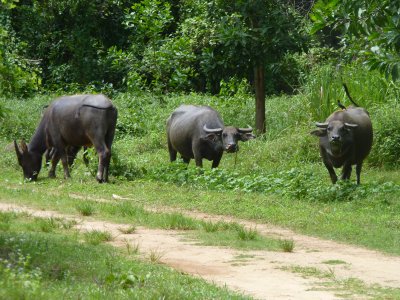
Large chunks of it. On the hoof. Steaked (pun intended) out in the National Park.
We've been eating at least one meal of rice and other things from ristorants and stalls. The other things vary a bit. Something like Thai Green Curry doesn't have a standard recipe. Its either a case of pointing at the food and smiling, or, nearer the tourist haunts, pointing at the menu and smiling.
Some of the Malay Muslim food we weren't quite game to point at.
Our taste buds haven't been totally destroyed by chillis and have noticed that food is less spicy in the North of Thailand than South.
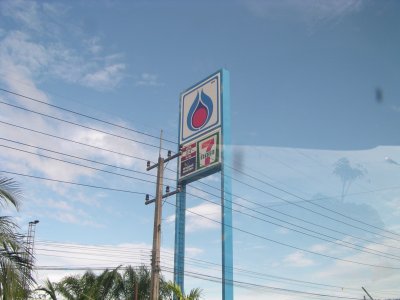
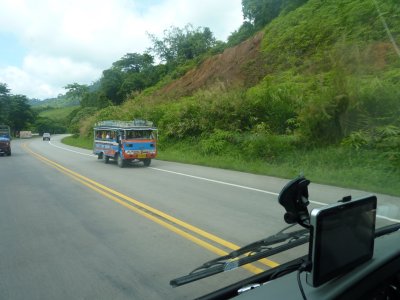
Not a good start for a motorhome conversion though.
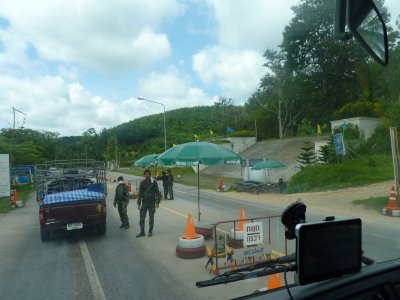
I have awkward memories of Zambia some 35 years ago where similar checks were accompanied by gunfire if the signal to stop was ignored.
Ali on the other hand has no such memories so took a photograph instead. I hope they didn't notice.
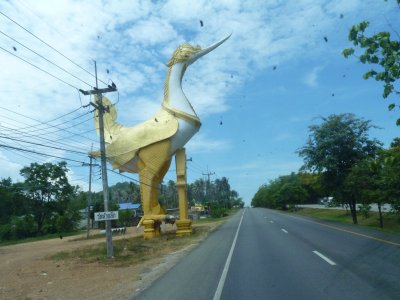
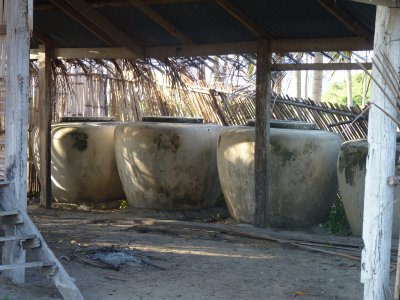
There are still lots of them but of course they are being supplanted by bright blue plastic barrels.
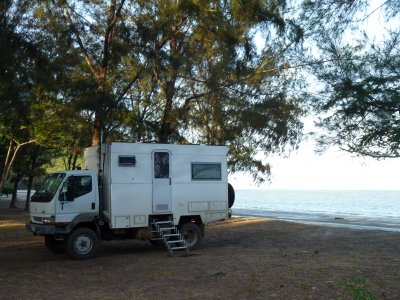
The sea is about 20m away. Just right for an evening swim.
For the two nights we were here one of the park people started up a smoke generator at dusk and walked along the beach with it so the smoke drifted across the campsite. It smelt like diesel but may have had other things in it. Aimed at keeping the mosquitoes down. We guessed it worked as they didn't get past our screens and we didn't get bitten.

These photos are for Laurie (Motorhome Club friend) who first made us aware of her favourite Aus bird and provided lots of useful suggestions as we were preparing the trip.
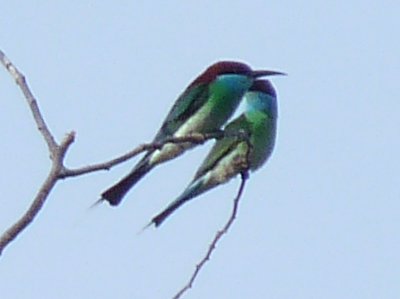
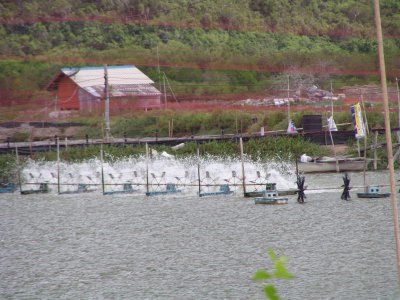
The spray is from paddle wheels. Presumably aerating the water.
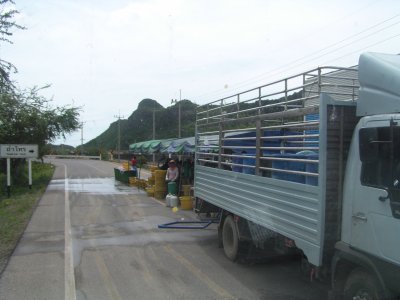
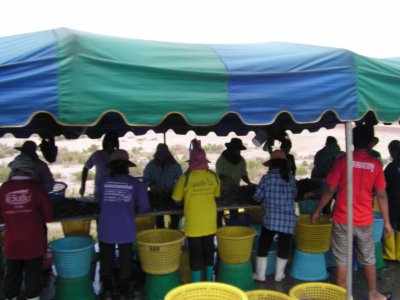

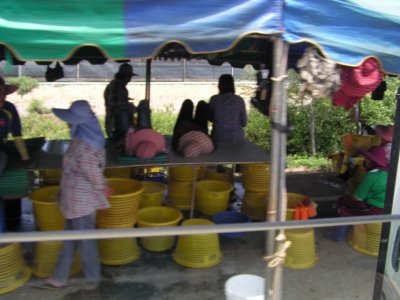
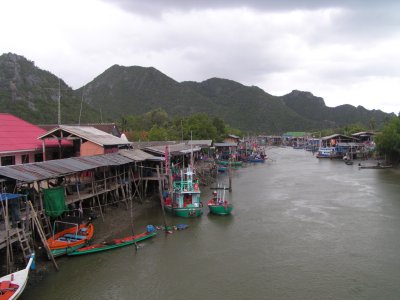
Open to the sea.
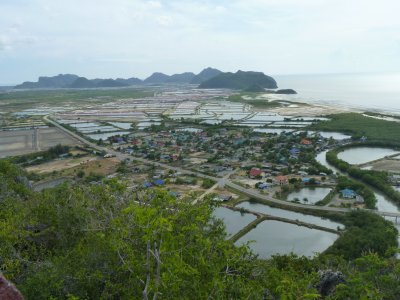
Hot and sticky, but worth it.
Fish farms surrounding the village, the river is the curly bit at the right.
Our campsite for two nights was on the beach beyond the first small headland in the distance.
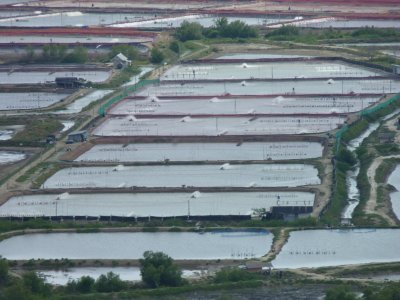
It looked like the ponds, lined with black plastic sheet, are periodically drained and cleaned.
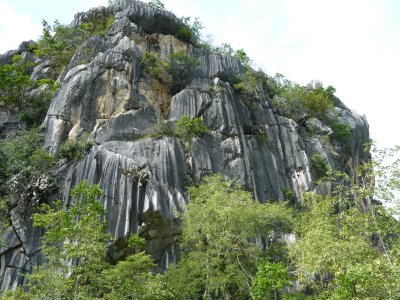
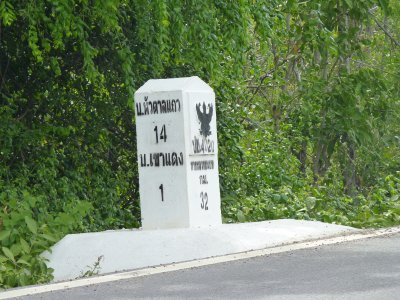
It means that when asking directions we are sometimes told where the turnoff is relative to the milestone.

We walked over a headland (about 1km and 200m high). The easier way would have been to pay for the boat ride. Even easier, wait for the tide to go out and walk around.
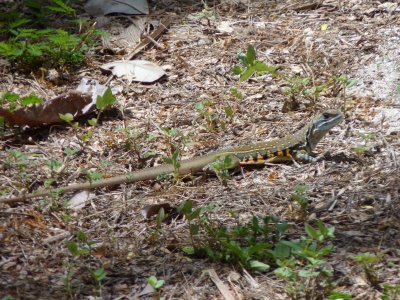
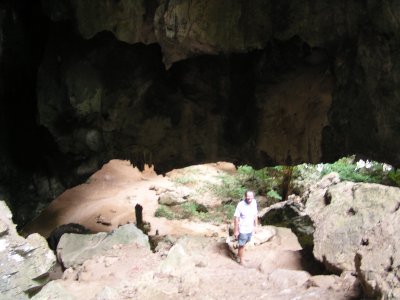
Having walked up then down to get over the headland we then walked up then down to get into the cave.
The cave is a large sinkhole.
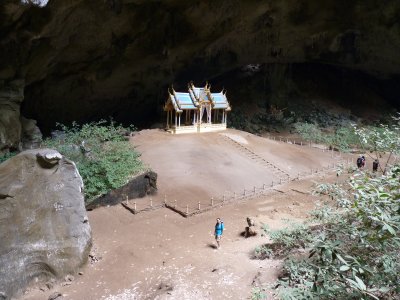
The throne occupies the center of the cave, bathed in light from above.
Similarly Ali.
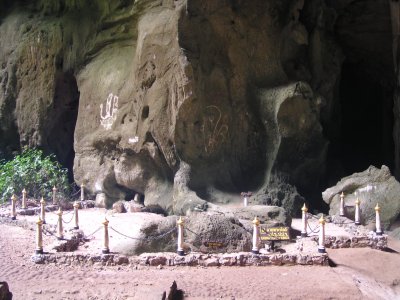
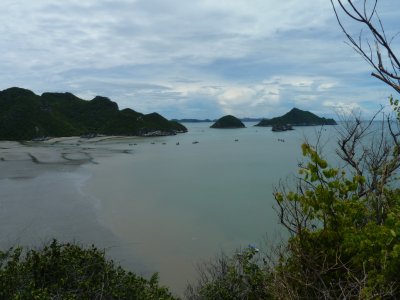

A French and Swiss couple on a short bike ride from Europe to Australia. They'd been on the road for 14 months and looked fresher than us.
Lots of stories to help us on our way.
They'll be cycling from Darwin to Adelaide so keep a look out and say hello.
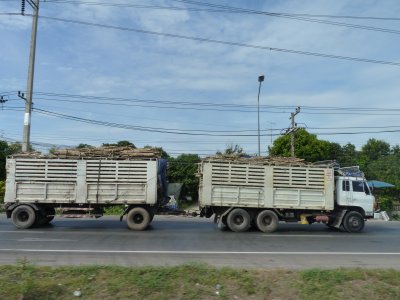
This rather large truck was carrying wood. Pieces of tree about 1m long and less than 100mm diameter.
We can only assume it must be rather special wood to be carried in such a large truck. Not only that there were quite a few similarly loaded trucks on the road.
Unfortunately we'll just have to wonder.
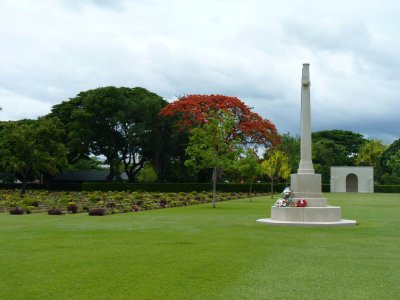
The resting place of Commonwealth and Dutch soldiers who died building the Thai Burma railway in WWII.
A peaceful oasis.
The remains of the approximately 6,000 allied soldiers who died were collected and re-buried where possible. Not so fortunate the 100,000 or so civilians.
I guess nothing changes as we listen to the BBC World Service and other news services and they grapple with the civilian cost of war.
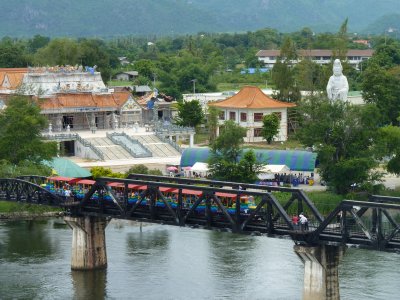
The dysneyfication of tourist attractions.
This is a brightly coloured "toy train" carrying tourists on a short trip across "The Bridge Over The River Kwai" and back.
The wooden bridge of film fame was built about 300m downstream but there is no trace remaining.
About 30 years ago I was on a local bus heading North in Sumatra. We had joined a queue of traffic to cross a river by pontoon. When we asked we were told the bridge had been destroyed - by the Japanese in 1945.
The original three center spans of the River Kwai bridge were destroyed by allied bombs. The Japanese replaced them with two spans shipped from Northern Indonesia. Just one of life's small connections.
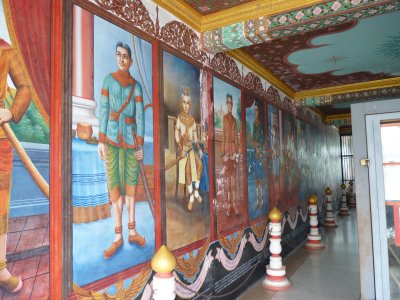
The building itself was intriguing as well as the stories to be told.
Very much an anti-war story but lots about battles between invaders from Burma and Thai people.
There is a very heavy Thai military presence between Kanchenaburi and the border.
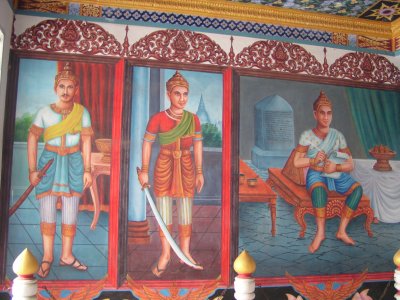
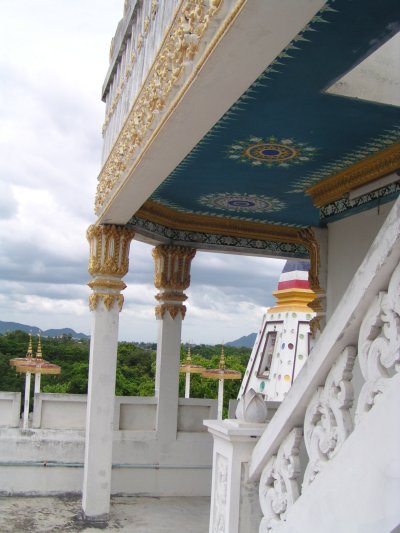
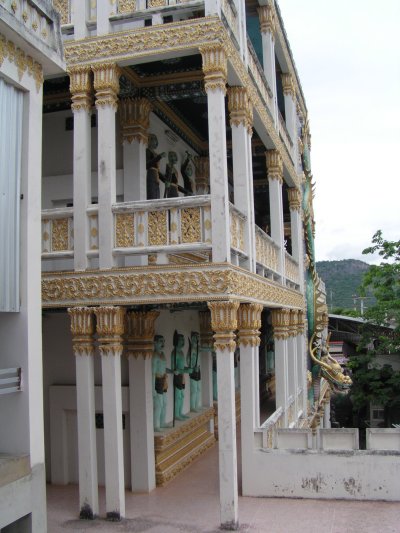

Not quite what we expected, the entrance had a couple of fibreglass giraffes.
It seemed we didn't have to go anywhere to find things of interest.
This is part of a herd of cattle being herded past us while the air conditioner drain was being successfully unblocked.
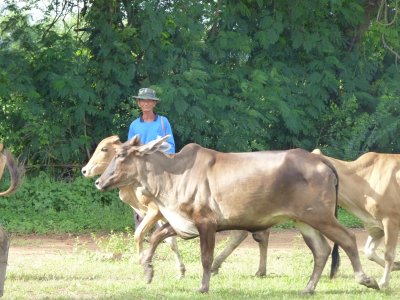
Somewhere round the neck of the nearest cow is a bell, reminder of cattle in the alps.
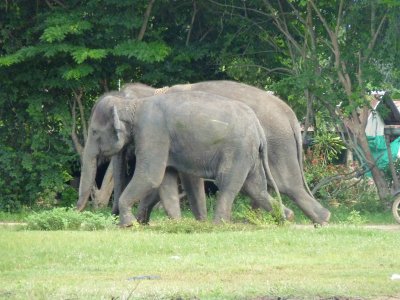
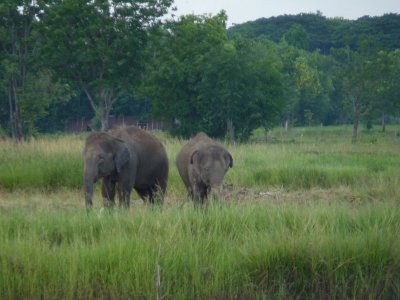
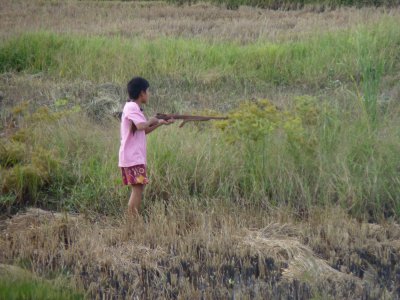
This young lad was stalking a few herons which had landed in a rice paddy. We'd earlier watched a couple of people harvesting the rice but didn't feel comfortable taking photos.
At distance I couldn't tell whether the "gun" was real or a toy. On closer examination it had rubber bands to fire a bolt.
He appeared blissfully unaware of our presence. He also has a bit to learn about hunting as the birds all flew away before he was in shooting distance.
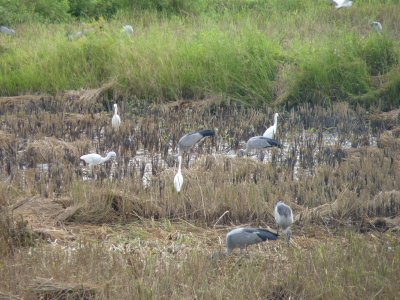
A mixture of herons and storks in the rice paddy that had just been harvested.